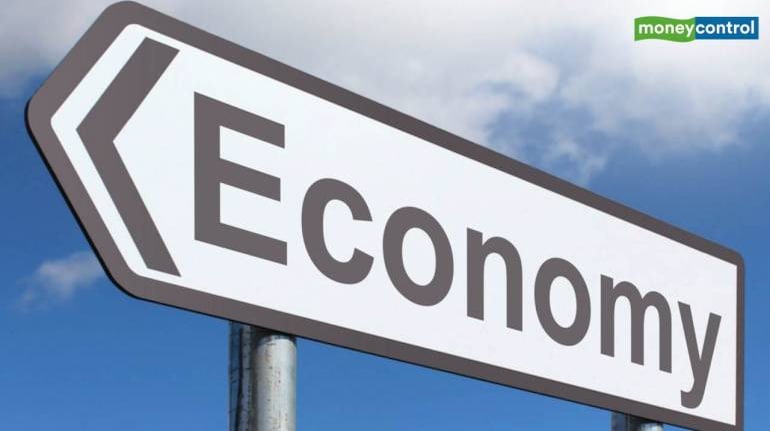As China engages in geopolitical battles with its neighbours including India and boards up its capital at home on suspicion of new coronavirus cases, here is an inside look at how China is trying to kickstart the faltering economic engine.
Sumeet Chander
China is now on the path to post-COVID recovery. Given that it was the first major economy to get out of the grip of COVID-19, it is not surprising that China leads the recovery index (EGRI) of 30 large economies that we have created. However, China’s recovery, defined as a combination of healthcare, work resumption and social activities, is still at 82 percent of its pre-COVID normal.
It is going to be a thorny ride, not just due to the disarray in the global economy, but also due to the prevalent sentiment about China. In a nod to the state of the economy, this year the Chinese government decided to do away with the annual GDP growth target – one of the rare occasions when this has happened. This was announced during the annual parliament meeting a few weeks back.
The thought uppermost in the mind of policymakers is about generating employment for its multitude of workers – the twin focus areas for the year are stabilization of the economy and management of the unemployment situation. Urban unemployment stands at around 6 percent whereas it was in the 5 percent range over the last few years. These numbers do not reflect unemployment in the migrant workforce – which is likely to be higher, since a lot of them work in export-oriented firms.
Over the years, China has been moving towards a consumption-led growth model from an investment and export-driven growth model. In the current context of the global economy, the pivot from export driven growth to consumption driven growth will be even stronger.
Concurrently investment in infrastructure is likely to increase. The government is focused on ensuring that infrastructure investment is in line with its strategic priorities. As such it has been earmarked for the areas of IoT, Artificial Intelligence, 5G network, Big Data, New Energy Vehicles Charging stations, UHV Power Grids, Big Data and Rail networks - a lot of these investments will be the underpinnings for the Digital Economy that China aspires to build.
Bolstering domestic demand though, will not be an easy task. There is a swathe of the populace which has started to economize by cutting down on spending. A lot of municipal governments are trying to get consumers to loosen those purse strings by offering consumption vouchers or other incentives. These incentives are on a broad range of products ranging from cars to household goods. This has led to some increase in consumer spending.
The automotive market has started showing signs of recovery and has had two consecutive months (April and May) of year-on-year growth. Whether this recovery is sustainable over a longer period of time and over different product categories, remains to be seen.
The government is also loosening its purse strings and issuing tax cuts and fee cuts for companies. The intent is to ensure survival of small and medium enterprises (SMEs) which are a significant driver of employment opportunities.
Then there are some other unconventional ways being tapped. For many years, roadside stalls in cities were viewed as eyesores that were removed by civic authorities in the process of urban gentrification. However, there are cities such as Chengdu which have managed to offer employment opportunities to more than 100,000 people by embracing the ‘stall’ economy.
We even saw the Chinese Premier extolling the virtues of the ‘stall economy’ experiment done by Chengdu. Within days, local municipal authorities in other cities were planning to follow suit. The balancing act seemed to be reconciling their disdain for disorderly stalls with ways to incorporate them into the organized urban landscape. While they are thrashing out ways to implement this, the key point is that the authorities are trying to boost employment by adopting means, both conventional and unconventional.
When I speak with my colleagues and friends in China, they all seem to strike a cautiously optimistic tone. The last two big crises in China led to some very interesting development on the economy front – Alibaba, one of the flag bearers of ‘digital’ China came into existence during the Dot-com crash. The high speed rail network in China - largest in the world and a source of pride for China - is considered to be an outcome of infrastructure investments made during the last global financial crash.
The path to recovery will undoubtedly be long and arduous, yet there is the promise of interesting and innovative ideas along the way.
(The author is Country Head, Greater China, Evalueserve, a leading analytics partner that helps companies with management and business processes across all functions. Based in Shanghai, Chander plans to share his perspective of the world's second-largest economy in a series titled 'The COVID-19 zeitgeist'. This is the fourth of his post-lockdown articles from Shanghai in China.)
His previous articles in this series are:The COVID-19 zeitgeist: Notes from China on supply chain realignment
The COVID-19 zeitgeist: Notes from China on business resumption process
The COVID-19 zeitgeist: Labour Day notes from China
Special Offer: Subscribe to Moneycontrol PRO at ₹1 per day for the first year. Coupon code: PRO365. Offer available on desktop & android only. *T&C Apply















